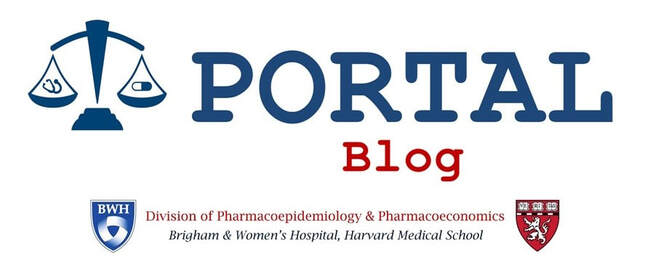|
Beatrice Brown
This article was originally published on Bill of Health, the blog of the Petrie-Flom Center for Health Law Policy, Biotechnology, and Bioethics at Harvard Law School, and was modified slightly to reflect the study authors’ affiliation with PORTAL. The COVID-19 pandemic has prompted several states to take steps to temporarily authorize therapeutic substitution of drugs experiencing sudden shortages, whether due to spikes in demand or supply chain disruptions. Although these instances of replacing patients’ typical prescription drugs with different drugs intended to have the same therapeutic effects have been prompted by necessity, therapeutic substitution more generally might reduce drug spending in the United States. In a recent piece in the BMJ by PORTAL, Jonathan Darrow, Jessica Chong, and Aaron Kesselheim explore using state laws to expand the authority of pharmacists to substitute clinically similar alternatives in order to help cut spending. Actions taken by states to temporarily allow therapeutic substitution can help them gain experience with this strategy and potentially lead to broader and more permanent drug substitution policies that could help decrease drug spending. Some state pharmacy boards issued emergency guidance during the pandemic to allow therapeutic substitutions in the event of drug shortages. In Vermont, for instance, the state board of pharmacy issued guidance on March 30, 2020 that temporarily authorized pharmacists to make a substitution within the same therapeutic class if it would, “in the clinical judgment of the pharmacist, have substantially equivalent therapeutic effect even though it is not a therapeutic equivalent.” The guidance requires that the pharmacist receive the informed consent of the patient, but the pharmacist does not have to notify the prescriber until after the drug is dispensed, which simplifies logistics when medicines are dispensed after-hours or whenever prescribers cannot quickly be reached. The pharmacist must notify the prescriber “as soon as reasonably possible.” In other states, legislatures have authorized pharmacists to engage in therapeutic interchange during the pandemic. For example, in Minnesota, the state legislature enacted a provision to allow pharmacists to “dispense a therapeutically equivalent and interchangeable prescribed drug or biological product” subject to several conditions, including: the drug is in short supply and cannot be obtained from the manufacturer, drug wholesalers, or other local pharmacies; the pharmacist cannot contact the prescriber within a reasonable amount of time for authorization; the pharmacist informs the patient; and the pharmacist informs the prescriber as soon as possible of the therapeutic interchange. In yet other states, governors’ executive orders provided for flexibility in therapeutic substitution policies. For example, in Section 33 of her Proclamation of Disaster Emergency, the governor of Iowa temporarily suspended any requirements that prevented pharmacists from engaging in therapeutic substitution without the prescriber’s prior consent. She also directed the state’s board of pharmacy to issue additional guidance. As states face rising costs and potential shortages, they should look to state pharmacy boards or other state health agencies for guidance regarding the acceptability of various types of drug substitutions, as noted by the BMJ authors. Unlike legislators, these agencies have greater expertise regarding clinical interchangeability. Additionally, states should monitor any changes in drug spending due to these therapeutic substitutions during the pandemic to ascertain the potential impact of a more permanent policy change, and also to avoid pitfalls. For example, states should be aware that substitution can sometimes lead to higher expenditures, such as when an expensive name-brand drug is substituted for an inexpensive generic. Because shortages occur at higher rates among less costly generic drugs, permanent substitution policies applicable during times of plenty are more likely to save money than emergency measures taken during times of shortage, when costs might actually increase. State policymakers should be aware of the differing effects of substitution policies on drug spending during times of emergency compared to times of normalcy to best understand how data on drug expenditures from these temporary measures can inform long-term policy changes. States must also monitor the impact on patients who have been affected by substitution. This monitoring can be accomplished by adverse event reports—which are already received by the FDA—and the establishment of a specific complaint line for therapeutic substitutions during the pandemic. If no evidence emerges suggesting a reason for concern, this may help allay fears that differences in ingredients or quality could lead to adverse effects or a decrease in efficacy. Assuaging such fears through evidence is crucial to garnering support for more permanent changes to state laws on drug substitution. Amid tragedy, a positive outcome of the pandemic may be the demonstration via emergency measures that state governments can be flexible in substitution policies and that they can safely and effectively rely on state pharmacy boards to address health needs by broadening pharmacist authority. By closely monitoring the effect of substitutions during this time, more permanent changes to drug substitution laws might follow, which can reduce drug spending in the U.S. |
AuthorPORTAL Blog posts are authored by PORTAL faculty, trainees, and collaborators. Archives
January 2022
Categories |
|
Program On Regulation, Therapeutics And Law (PORTAL)
Division of Pharmacoepidemiology and Pharmacoeconomics 1620 Tremont Street, Suite 3030 Boston, MA 02120 |



 RSS Feed
RSS Feed
